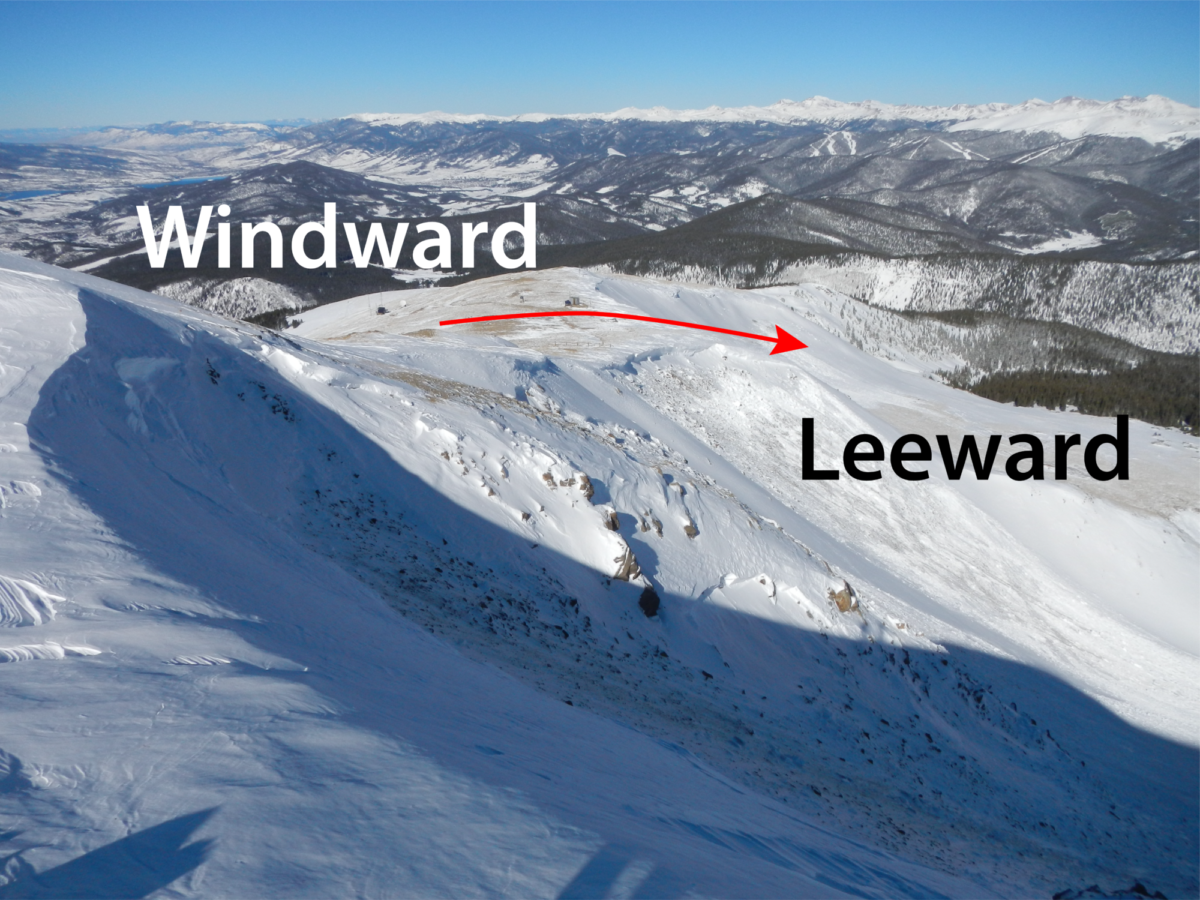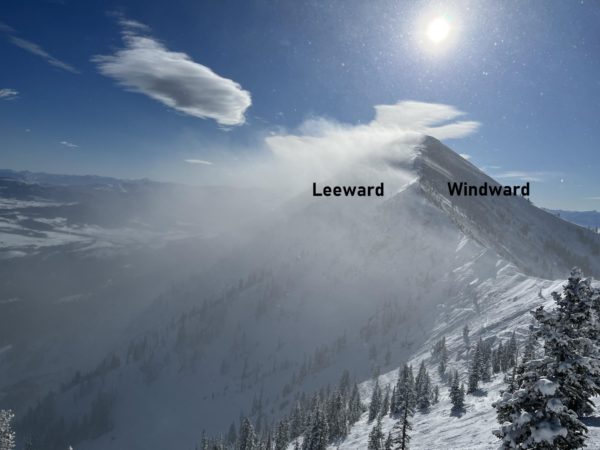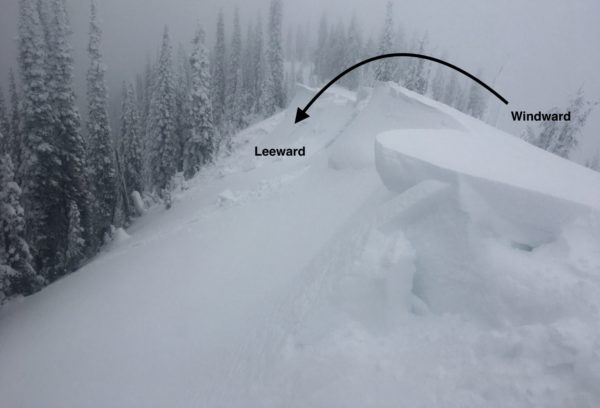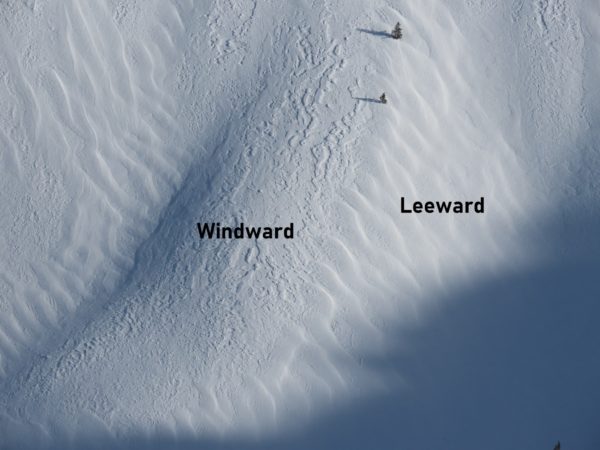The downwind side of terrain, where wind loading occurs.
Leeward aspects and leeward terrain features are those that are oriented downwind, facing away from the blowing wind. This is the type of terrain that you would go hunker down in to get away from wind blasting you on a ridgeline. Because wind speeds decrease in these areas, blowing and drifting snow is deposited on leeward terrain features. In some cases, leeward terrain is easy to identify because it is guarded by an overhanging cornice. In other cases, you need to pay attention to recent wind patterns and subtle snow textures to determine the location of leeward features. Thicker drifts and dunes of wind deposited snow indicate leeward terrain. In North America, easterly aspects are commonly leeward terrain because most storm systems bring winds originating from a westerly direction. Leeward terrain is often more dangerous because of the slab formation and weight on the snowpack caused by wind loading.



